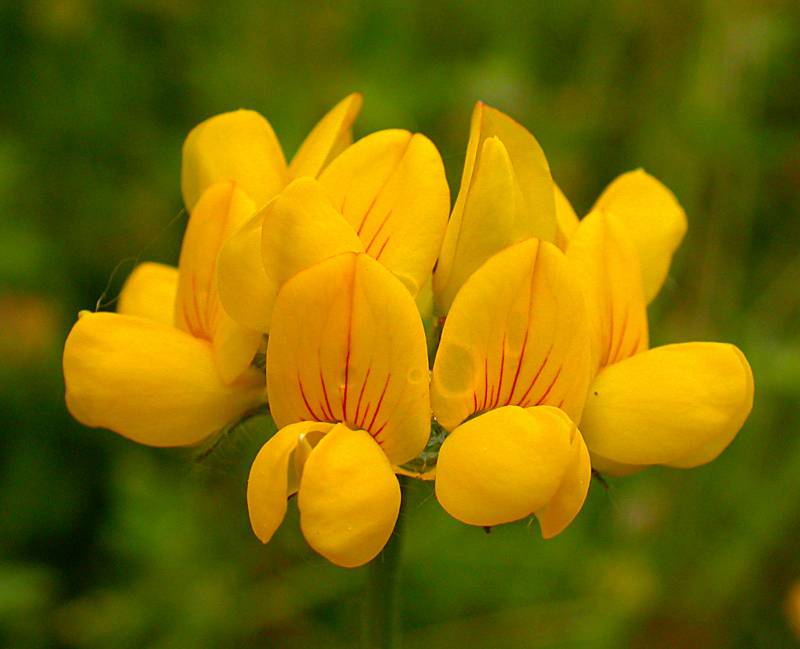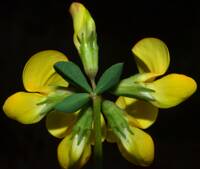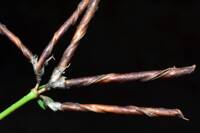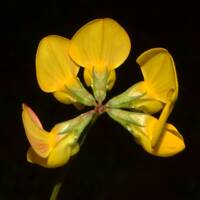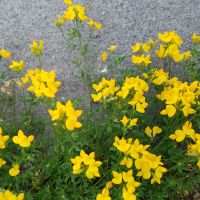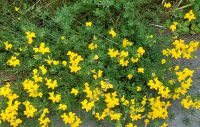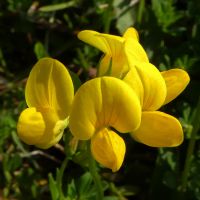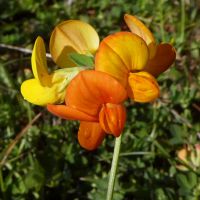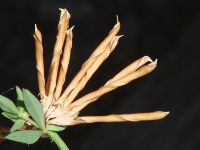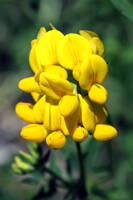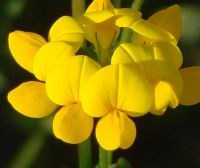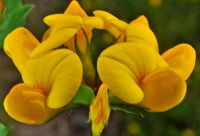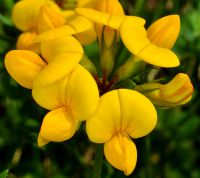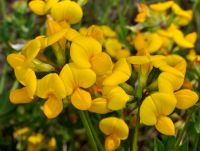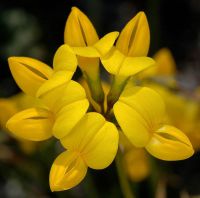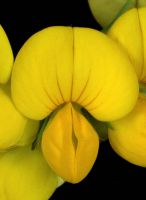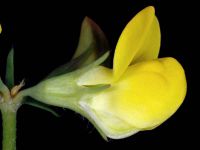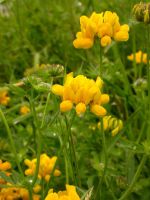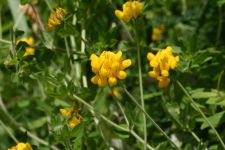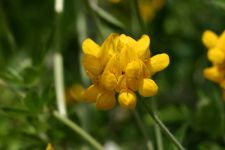Distribution: Occurring on both sides of the Cascades crest in Washington; widely distributed throughout most of North America.
Habitat: Open, mesic to wet areas, typically where disturbed.
Flowers: May-September
Origin: Introduced
Growth Duration: Perennial
Conservation Status: Not of concern
Pollination: Bumblebees, bees, butterflies
Herbaceous perennial, the numerous stems prostrate to ascending, usually trailing and often rooting at the nodes, with or without soft hairs; stipules gland-like.
Leaves alternate, pinnate with 5 leaflets, the lower pair at the point of attachment to the stem, all short-petiolate and equal in size and shape, elliptic or obovate, 5-17 mm. long and 2-7 mm. broad, with soft, marginal hairs.
Inflorescence a head-like umbel on axillary peduncles 3-12 cm. long, with a trifoliate bract below the umbel; flowers pea-like, yellow tinged with red, 8-15 mm. long; calyx 5-8 mm. long, tubular, the 5 linear teeth equal to the tube; stamens 10, the filaments attached in 2 groups.
Pod flattened, 20-40 mm. long and 2-3 mm. wide.
Publication: Sp. Pl. 2: 775-776. 1753. 1753.
PNW Herbaria: Specimen records of Lotus corniculatus in the Consortium of Pacific Northwest Herbaria database
WA Flora Checklist: Lotus corniculatus checklist entry
OregonFlora: Lotus corniculatus information
E-Flora BC: Lotus corniculatus atlas page
CalPhotos: Lotus corniculatus photos

